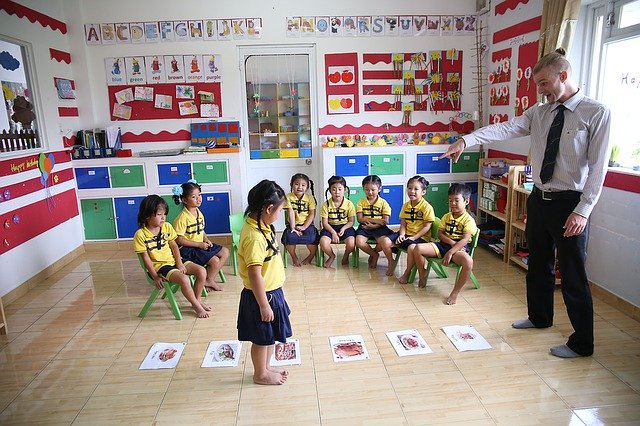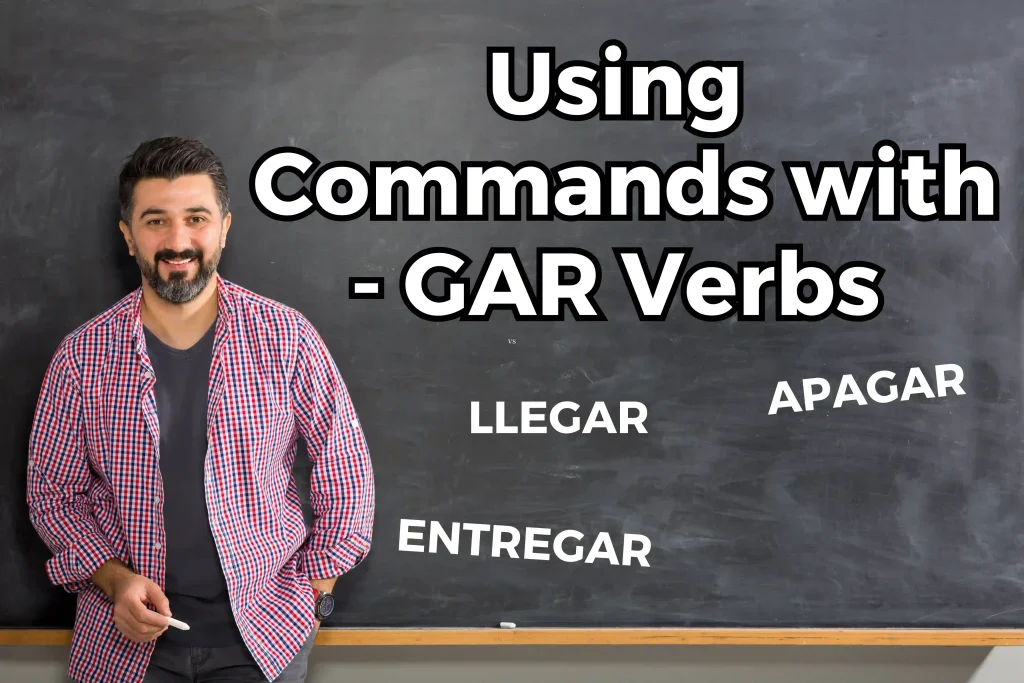In this Spanish for Educators lesson, you will learn three steps to implement redirective language or “lenguaje redirectivo” in your classroom.
Here are the 3 Steps to Implement Redirective Language in Spanish lesson that I taught on YouTube and to our Facebook group:
Subscribe to our YouTube Channel to see all of our lessons and get the latest videos right away!
In our past lesson, we started a new mini series called “manejo de aula” (classroom management), and the first topic was redirective language in Spanish.
Today, we are going to look at the three steps you will find useful to implement the “lenguaje redirectivo” in your classroom 🙂
Lenguaje redirectivo – Redirective Language
El lenguaje no verbal – Non-Verbal Language

Sometimes you don’t need to say any word to redirect your students’ behavior; what you need is a powerful non-verbal communication. This is because el lenguaje no verbal es PODEROSO.
Some good examples of a powerful non-verbal language are:
- Acercarse al estudiante: Get closer to your students so they automatically change their attitude/behavior.
- Mantener el contacto visual: Maintain eye contact with your students so they know you are aware of what they are doing.
- Un toque en el escritorio, hombro, etc.: tapping their desk or even their shoulder can totally change a student’s behavior. Simple but effective.
- Movimientos de la cabeza: Little head nods are also helpful in this case. Saying a “yes” or “no” with a head movement is a good example of non-verbal language.
Redirecciones Verbales – Verbal Redirections

PATRONES que pueden usar…
| Spanish | English |
| Necesito que tú + Subjuntivo | I need you to… |
| Favor de + verbo infinitivo | Please do this or that |
| Vamos a enfocarnos en + Infinitivo (collective voice) | Let’s focus on… |
| No es apropriado + infinitivo | It’s not appropiate to… |
| Presta atención (commands) | Pay attention! |
| Puedes escoger ____ o ____ (dando opciones) | You can choose between ____ or ____ |
| La expectativa es (Restating Expectations) | The expectation is…. |
Pasos en la redirección – Steps for Redirection
1. Primer Paso—> Den un aviso que algo bueno / importante viene
The first step is giving a warning that something good / important is coming.
*This is important, this is going to be good!
- Enfócate (tú), enfóquense (ustedes) = focus
- Presten atención (ustedes) = pay attention
…Vamos a:
- Aprender = learn
- Repasar algo interesante / importante… = Review something interesting / important…
Useful lesson: Commands / Mandatos
2. Segundo paso—> Necesito que…
The second step is where you are expressing what your students need to do.
**I need you to… follow along, work with me, etc.
- Necesito que me sigas = I need you to follow me
- Necesito que trabajen conmigo = I need you all work with me
This step requires the use of the subjunctive. But don’t worry, even if you haven’t learned how to use it, you can still memorize these phrases if they are helpful for you.
Useful lesson: Subjuntivo / Subjunctive
3. Tercer paso—> La Voz Colectiva
The third step is using the collective voice.
Not appropriate, we are…
- No es apropiado = It’s not appropriate
- Estamos ______ ahora (leyendo, escribiendo, etc.) = We are _____ now (reading, writing, etc.)
This is a good way to get the whole class on the same page 🙂
Simple Questions that Prompt Students to Self-correct

Sometimes, you will find asking simple questions to your students to help them to self-correct their behavior.
Here are some examples:
| Spanish | English |
| ¿Qué debes estar haciendo en este momento? | What should you be doing right now? |
| ¿Adónde va este papel? | Where does this paper go? |
| ¿Cuál es la regla sobre ____ (chicle en el aula)? | What is the rule about ____ (gum in the classroom)? |
We want to know…Comment below–>What are your thoughts about this topic. Let us know in English or Spanish in the comment section below!
¡Te toca a tí!
Your action steps:
- When considering these topics, what vocab. phrases do you specifically need to know?
- Subscribe to our YouTube Channel
- Carve out an hour each week to watch the lesson and study
- Interact – We want your feedback…What was helpful? Comment in this FB group, on my blog, or on YouTube videos
Now it’s your turn! I packaged all of this vocabulary in Spanish into some flashcards for you to study.
I packaged all of this into easily downloadable .pdf notes–Get your copy for free today!
Download the lesson notes and start creating your own sentences using this new vocabulary in Spanish and share them on the comments below or in our Facebook group to receive feedback from other Spanish learners ?




